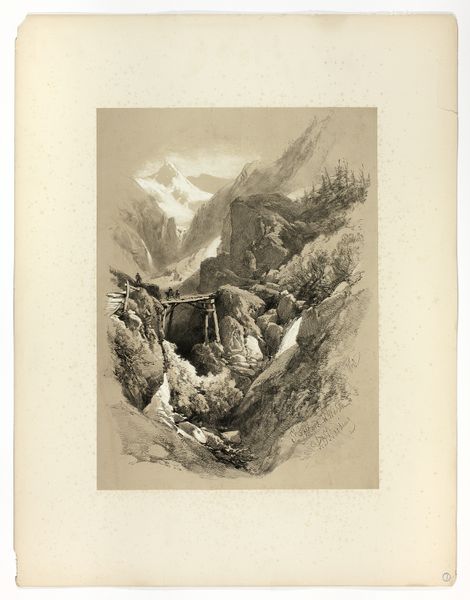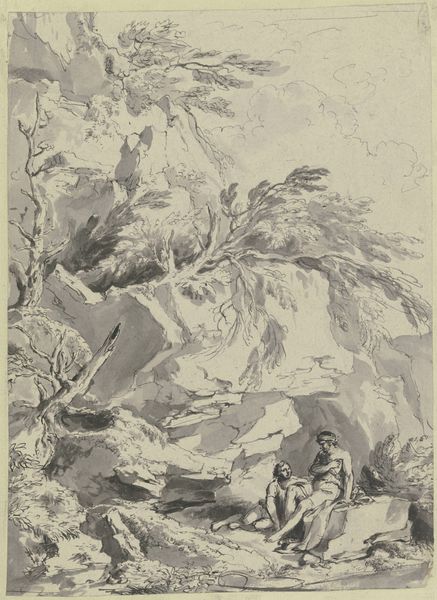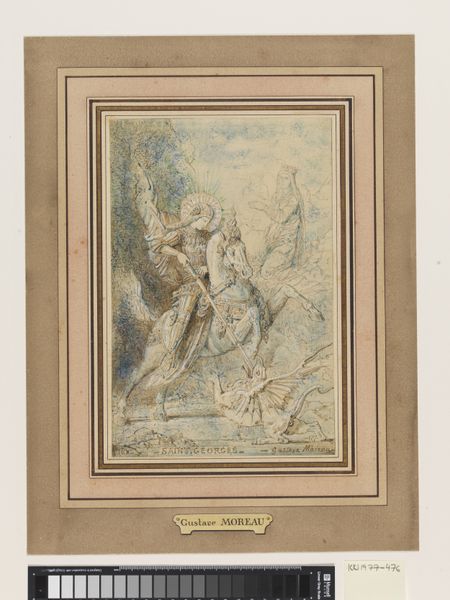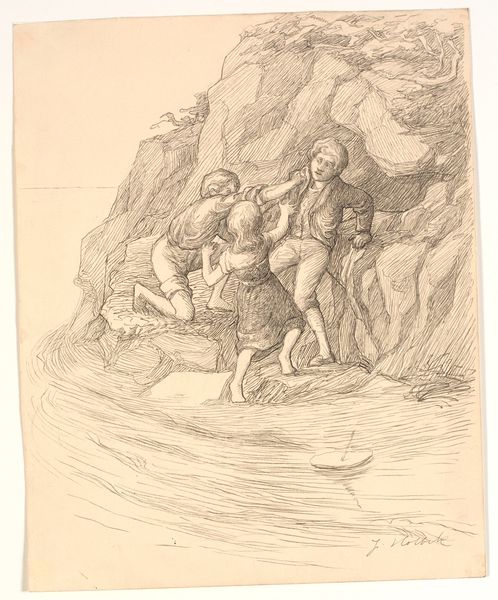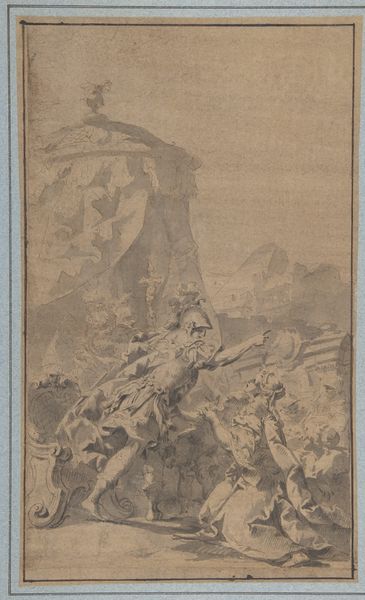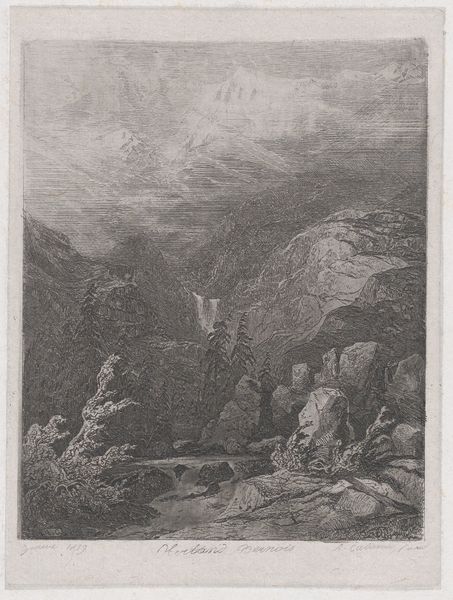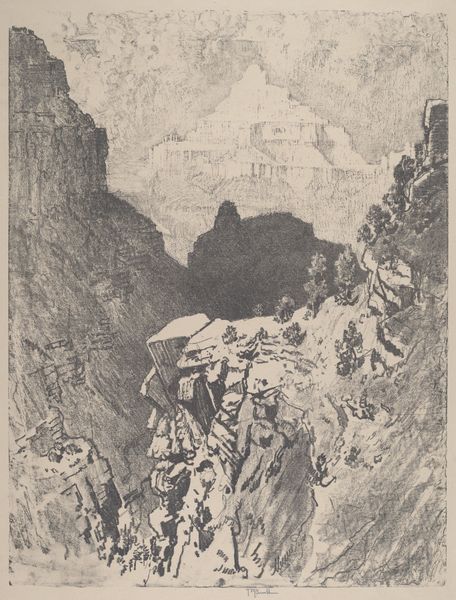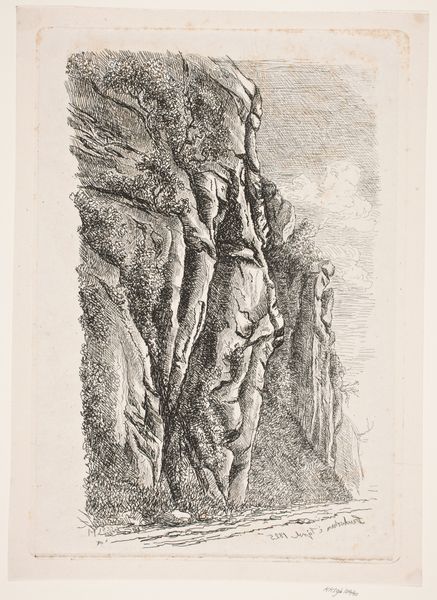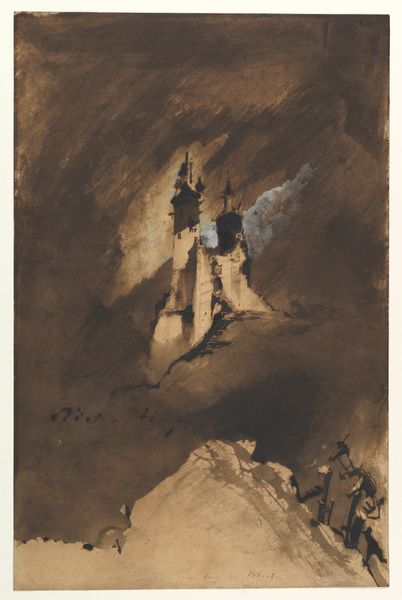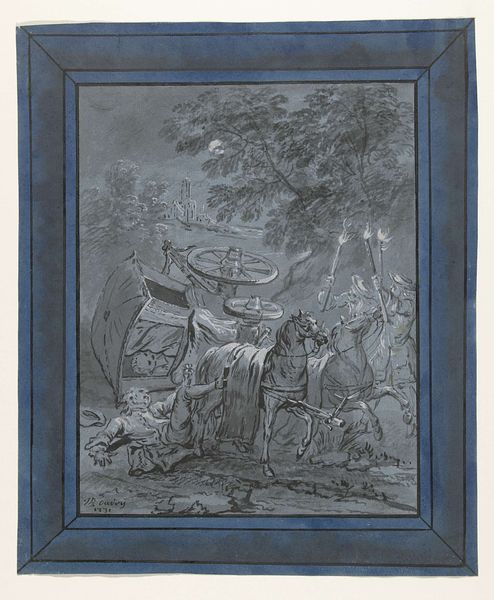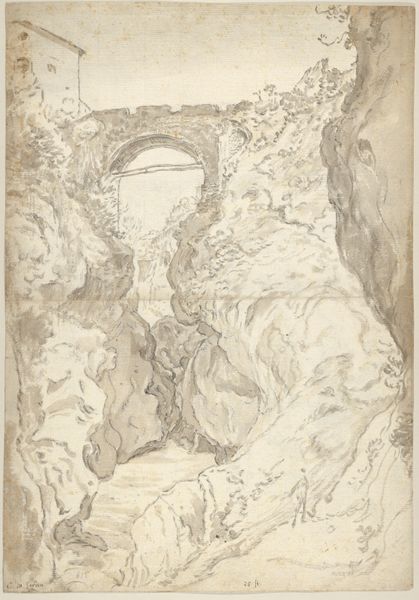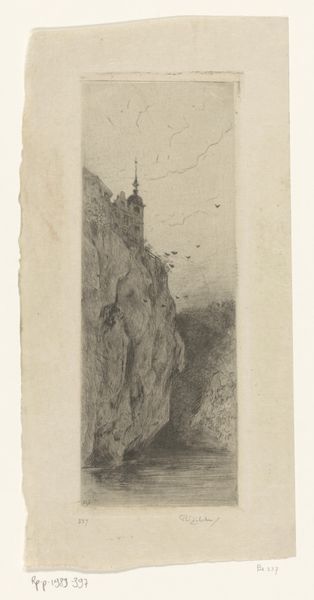
Soldiers in a Cave Receiving Blessings from Heaven 1810 - 1883
0:00
0:00
drawing, print
#
drawing
#
water colours
#
narrative-art
# print
#
landscape
#
soldier
#
romanticism
#
history-painting
Dimensions: sheet: 10 1/4 x 8 1/4 in. (26 x 20.9 cm)
Copyright: Public Domain
Curator: This work, dating from between 1810 and 1883, is entitled *Soldiers in a Cave Receiving Blessings from Heaven.* The piece is attributed to Franz von Hauslab the Younger and resides here at the Metropolitan Museum of Art. Editor: There’s a rather melancholic feel to the whole scene, wouldn't you agree? The stark monochromatic rendering of the figures against the imposing cavern creates a somewhat stark contrast. Curator: Indeed, and one must acknowledge how Hauslab masterfully employs watercolours in this drawing, creating a remarkable range of textures, primarily stone, suggesting that this might be an artist’s proof given its graphic qualities. It's clear that great effort has been expended here. The modulation of the grays in the lithographic print produces a rather somber tonal unity that really accentuates the narrative drama, doesn't it? Editor: You see the somberness in the gray wash too? I also notice that in this Romantic-era piece the way the printmaking process captures the granularity of the stone so skillfully evokes a sense of weight, emphasizing both the material realities of conflict, of fighting soldiers in their natural environment and also maybe the heaviness of fate, of being divinely ‘blessed,’ for what, slaughter? Curator: Precisely, the etching medium enhances the very angularity of the rock formation. Hauslab uses line and texture to structure the overall composition. Notice how the figures are deliberately placed against the opening of the cave? A play with the ideas of confinement, but also transition, and passage, literally a threshold between two spaces. Editor: These historical, often martial, scenes always make me ponder about the human labor involved, the work of the soldiers themselves, but in art the artist's labour to create it—especially when we're talking about watercolors that have been adapted to reproductive technologies. Look how carefully the lines were worked out; what we lose with a single printing is the uniqueness of the brush stroke; do we also lose an aspect of artistic meaning? Curator: Interesting. Well, however the prints were made, these impressions afford an excellent opportunity for engaging in careful and reflective looking. Editor: Absolutely! I think viewers, particularly those keen on landscapes, will enjoy pausing here.
Comments
No comments
Be the first to comment and join the conversation on the ultimate creative platform.
